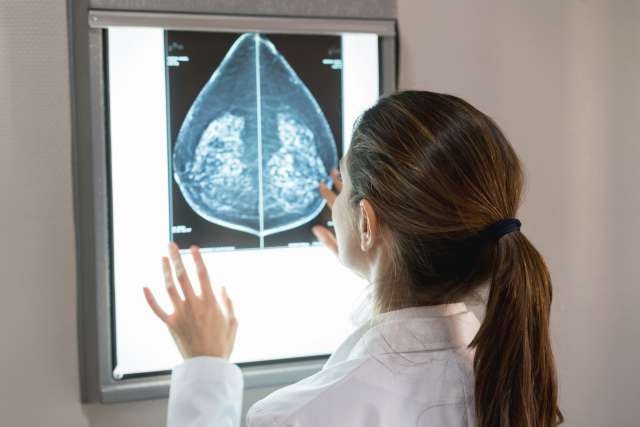Breast cancer is second only to skin cancers in prevalence among women in the U.S. The American Cancer Society estimates there will be 317,000 new cases of invasive breast cancer diagnosed in 2025.
However, breast cancer is generally treatable and, in most cases, curable. The key is early detection. That's why screening is so crucial.
"As a breast oncologist, I see every day how early detection changes the story," says Mina Sedrak, MD, an associate professor at the David Geffen School of Medicine at UCLA and director of the Cancer and Aging Program and Cancer Control and Survivorship research at the UCLA Health Jonsson Comprehensive Cancer Center. "Screening is one of the simplest, most powerful tools we have to turn fear into hope and treatment into healing."
October is Breast Cancer Awareness Month. Following are FAQs about the disease, symptoms, detection and screening.
What are the current screening guidelines for breast cancer?
Women at average risk should have their first mammogram between ages 40 and 50, repeated every one to two years through age 74. A “screening” mammogram is an X-ray of the breast when the patient has no symptoms. A “diagnostic” mammogram is for patients who show symptoms, or when an abnormality shows up on the screening mammogram.
Researchers at the UCLA Health Jonsson Comprehensive Cancer Center recently published a study that suggests women in their 80s may also benefit significantly from regular mammograms.
UCLA Health is able to conduct 2D and 3D mammograms, the latter of which provide images of the breast tissue that may reveal breast cancer that otherwise could be hidden by breast tissue.
What about an MRI?
An MRI may be used to screen a patient with higher-than-average risk of breast cancer, or to clarify something that shows up in a mammogram, especially if the breast tissue is dense. Doctors may recommend high-risk patients undergo an annual MRI between their yearly mammograms.
What role does genetics play in breast cancer risk?
About 5%-10% of breast cancer is hereditary, so it’s important to know your family history and whether you are at greater risk genetically.
What are some other cancer risk factors?
Genetics and other risk factors such as age and gender are out of our control. But we can generally control other lifestyle habits that can affect a person’s risk of breast cancer (as well as other cancers). Exercise and a healthy diet play important roles, as does maintaining a healthy weight, not smoking and limiting alcohol consumption. All of these lifestyle practices can lower a person’s risk of developing cancer.
What are the most common types of breast cancer?
The most common type – 70%-80% of breast cancers, according to the Centers for Disease Control and Prevention (CDC) – is invasive ductal carcinoma (IDC). The cancer cells begin in the tubes (ducts) that carry milk and spread to other areas of the breast. They may also spread through lymph nodes and the bloodstream.
About 10%-15% of breast cancers are invasive lobular carcinoma (ILC). Cancer cells begin in the lobules – the part of the breast responsible for producing milk – and then spread to tissues and potentially other areas.
What are the warning signs of breast cancer?
Potential warning signs include a lump on the breast or in the armpit area; pain, swelling or thickening in the breast; or an irritation of the skin of the breast. Other indicators to look out for include flaky skin or pain around the nipple; abnormal discharge from the nipple, including blood; and change in the shape or size of the breast. If any of these appear, they should be evaluated by a physician.
Most women have no symptoms of early breast cancer, which is one reason annual mammograms beginning at age 40 are so important, to catch cancer as early as possible.
What does a breast cancer lump feel like?
Not every cancer lump is palpable, but if it is, it may feel like a hard, fixed mass.
Is breast cancer treatable and curable?
There are five main stages of breast cancer (stages 0-4), as determined by the size of the tumor, whether the cancer is in the lymph nodes and if the cancer has metastasized. Stage 0 is non-invasive breast cancer and is not life-threatening. All stages of breast cancer, except Stage IV, are treatable and curable. Stage IV breast cancer is not yet curable, but it is treatable.
Can men get breast cancer?
Yes. About 1 of every 100 cases of breast cancer diagnosed in the U.S. is in a man, according to the CDC. The most common types of breast cancer in men are invasive ductal carcinoma, which begins in the ducts and moves outside into other parts of the breast; and ductal carcinoma in situ, in which cancer cells are only in the lining of the ducts and have not spread.




